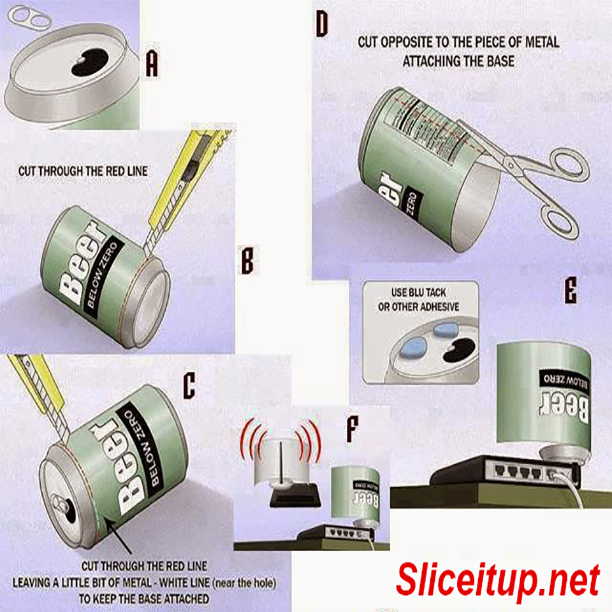
Tips and Tricks to Improve Your Home WiFi Network
There’s no place like home, because home is where the WiFi is. Try saying that while tapping your heels three times, Dorothy. Home is where your WiFi connects automatically and the Tin Man could be your AP, but just like his hollow heart, your router is going to need an upgrade and we’re just the wizards to help!
In our first edition of The Chronicles of WiFi series, we’re slicing up your sketchy home WiFi signal and reviving your dead zones with expert tips from our trusted team of certified technicians.
Change Router Channels to Boost WiFi Network - Routers perform on various channels, choosing what channel is best for you can play a huge roll in network interference limiting both the coverage area of your WiFi signal as well as the signal strength. In the U.S., routers operating on the 2.4GHz band can find channels 1, 6, and 11 optimal for WiFi-router performance due to the fact that they are the only 3 out of the 11 channels that do not overlap, causing less traffic and stress on your wireless network.
Most modern day routers actually auto-configure themselves, which can cause you less hassle initially, but may also work as a double-edged sword in the future. The complication presents itself after the router has already configured itself to a specific channel, the channel could become congested or have multiple other channels overlapping it, causing drastic interference. The plus side of this is that more advanced routers have actually been designed to seek out the least congested channel. When you combine this with the ability to schedule router reboots, it’s the ultimate combo to dodge unruly traffic.
DiY Parabolic Reflectors - A nifty know-how to extend your WiFi range in a house are parabolic reflectors. Paraba-what?! To put it simply it’s the spectacular works of merging a tin can to your router or AP, simple enough? Hacks such as these (also known as the windsurfer hack) provide a noticeable boost in your WiFi signal’s performance, though how much of a boost it truly provides is somewhat of a tall-tale. DiYers have reported gains from as little as 5 percent to as high as 82 and just under 100 percent from the parabolic reflectors. These handy little inventions are sometimes known to penetrate concrete walls from one side of a household to another, reaching even the upper floor and detached garages and sheds. Shocking what you can do with a tin can, right? So take out your scissors, an adhesive, and an empty soda can and follow the illustration below to learn how to make your very own parabolic reflector, WiFi class is in session!
 -DiY WiFi Range Booster-
-DiY WiFi Range Booster-
Upgrade/Update Your WiFi Equipment - Just like the caveman's first wheel, we too need groundbreaking inventions and upgrades. I call this first one the stick, or rather its proper name, the antenna. Your router's antenna is what sends out the radio waves to the device you’ll be utilizing the WiFi on, making it an integral part in boosting the range of your home WiFi. However not all routers have visible antennas (due to increased popularity in internal antennas), but if your router does include an antenna or supports an external antenna, then count yourself lucky that you can at least attempt to perform an upgrade or modification. Before purchasing a new antenna it’s best to first analyze your current one. Simple problems like a slightly unscrewed antenna could present themselves as the root of your poor WiFi signal. Antennas could be purchased from a broad range of prices and finding the right one for you can be like finding a needle in a haystack. A higher gain antenna usually means the antenna will transmit and receive the WiFi signal further, but keep in mind that homes are usually better suited with omnidirectional antennas (the higher the gain, the more pinpointed the signal becomes, balance house coverage with speed).
Updating and upgrading go hand in hand and though your antenna may be in desperate need of an upgrade, your router and network adapters might be dreaming of an update. In this modern age, we’ve gotten used to the occasional “Restart your computer to finish installing important updates” or “New settings are available. Would you like to update them now?” But we find ourselves so busy using the WiFi, that we forget to manage it. However, not all is lost. Router updates are generally found on manufacturer websites with relative ease and uploaded through the router interface. Network adapters are also exposed to outdated firmware. Laptops typically have onboard adapters which can be easily updated via Network settings on your respective operating system. Laptops and desktops without onboard adapters can alternatively be improved by buying an external network adapter (if purchasing a new antenna it can be wise to purchase a stronger performing network adapter as well).
Obstructions In Your Home WiFi Network - With countless obstructions blocking, reflecting, and absorbing WiFi signals, it’s a wonder we get any connection at all. Still precautions can be taken to ensure your router navigates the obstacle course at optimal strength and speeds. The simplest fix would be installing your router in the most centralized spot of the house, this helps the signal spread more evenly throughout the household, especially if your router is equipped with an omnidirectional antenna. Another means of extending your WiFi range at home is by removing obstructions in the path of your WiFi signal. Obstructions present themselves in the guise of cordless phones, microwaves, baby monitors, and any other product that uses the 2.4GHz band. A simple solution can be to remove devices such as these from either your house altogether or from the immediate area of your router. If space is an issue you can purchase similar devices that operate on a different band. WiFi alternatives are also available, enabling the operation of these devices on the actual network as opposed to causing it interference.
802.11ac; 5GHz Band - Operating on the 2.4GHz band is most common due to familiarity and the expense of having to switch all/most of your devices to 5GHz compatible alternatives, but you can be plagued with a multitude of interferences. As aforementioned, WiFi signals can see a great number of obstacles, especially from other electronic devices such as microwaves who periodically send out radiation which causes noise on the 2.4Ghz band ultimately weakening your WiFi signal. However the new 802.11ac standard operates on the 5GHz band, this in turn will cause a lot more devices to support the 5GHz band. Most of today’s smartphones, notebooks, and tablets are 5GHz enabled making the on-the-go switch seamless.
Making the switch to the 802.11ac 5GHz band will undoubtedly improve your WiFi network coverage and speeds. Operating on a different spectrum than the 2.4GHz band, interference from other networks and devices decreases dramatically, even bluetooth and microwaves won’t interrupt your network signal. Perhaps a downfall in the 5GHz band is its range, operating at a higher frequency decreases the distance the signal covers. Though this shortcoming could prove to be advantageous, WiFi traffic is caused by too many signals overlapping each other, if the signals aren’t invading other homes then less traffic and interference is being caused, further improving your network strength.
Contact us today and find out how SLICE Managed Solutions can boost your home WiFi network. For more expert tips on WiFi improvement stay tuned for the next edition of The Chronicles of WiFi!
